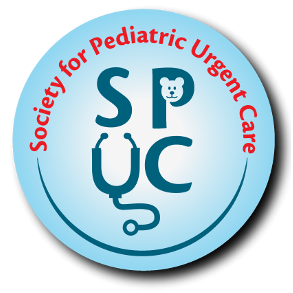ALERTS
- Urosepsis
- Pyelonephritis
- STI’s
- Renal abnormality
- Testicular Torsion
- Inguinal Hernia
- Infants < 2 months
- Female > male incidence
AGE OR PREGNANCY CONSIDERATIONS
- Infants < 1yr – Urosepsis risk
- Adolescents – STI risk
DIFFERENTIAL DIAGNOSIS
- Occult bacteremia in febrile infant without source
- Non-specific vulvovaginitis
- Urethritis
- STI – Urethritis/Epididymitis
- Constipation
- Vaginal foreign body
- Group A strep
- Kawasaki’s disease
- Appendicitis
- Dysfunctional elimination
EVALUATION
HISTORY
- Onset and timing of dysuria, presence of frequency and/or urgency, discharge, gross hematuria, associated symptoms (fever, abdominal pain, vomiting, back pain).
- History of UTI
- Irritability, poor feeding – Infants/young children
- Sexual history – Adolescents
PHYSICAL EXAM
- Abdomen
- Genitalia
- Back – CVA
- Cardiovascular – HR, perfusion
- Neuro – mental status, irritability
Diagnostic findings
- Abdomen: suprapubic tenderness
- Genitalia: urethral meatus erythema, foul odor, assess for discharge
- Back: tenderness, assess CVA
- Cardiovascular: tachycardia, assess perfusion
- Neuro: assess mental status and irritability
Concerning Findings
- Pyelonephritis: CVA tenderness, vomiting, fever, tachycardia
- Urosepsis: Fever, tachycardia, decreased perfusion, irritability, altered mental status
- STI (epididymitis/cervicitis): Urethral or vaginal discharge, scrotal pain/swelling, pelvic pain
DIAGNOSTIC TESTS & INTERPRETATION
Lab Tests
- Urinalysis
- Urine Culture
- GC/Chlamydia
- CBC
- Blood Culture
Imaging/ Diagnostic Procedures
- Renal Ultrasounds
- VCUG
MANAGEMENT
TRANSFER/ADMISSION CONSIDERATIONS
- Age < 2months
- Urosepsis/Bacteremia
- Immunocompromise
- Dehydration
- Testicular torsion
URINARY TRACT INFECTION
TREATMENT
First Line
- Oral
- Cefixime
- Trimethoprim-Sulfamethoxazole
- Augmentin
- Ciprofloxacin if >15years
- Parenteral
- Third and fourth generation cephalosporins and aminoglycosides.
- Indications for IV: sepsis, < 3-6 months, vomiting/unable to tolerate oral medications, known resistant pathogen
Second Line
- Amoxicillin
- Nitrofurantoin
- Macrodantin
Supportive
- Fever and/or pain relief
- Push fluids
Complementary & Alternative Therapies
- Cranberry juice
- Sitz baths for pain with urination
FOLLOW UP
Outpatient Referral
- PCP in 24-48 hours
- Urology/nephrology
- Age <2yr with first febrile UTI
- Recurrent febrile UTI at any age
- Family hx of renal or urologic disease
Written instructions should include:
Anticipatory Guidance
- Importance of increased fluids
- Importance of completion of abx
- May take 48-72 hours for dysuria and fever to stop
Activity, Diet
- Activity as tolerated
- Increase fluids
Signs and Symptoms to return
- Persistent fever or new onset of fever
- Persistent urinary symptoms (dysuria, hematuria, frequency/urgency)
- Vomiting, decreased urine output
- Lethargy
PROGNOSIS, COMPLICATIONS
- Typically responds well to antibiotics
- Can progress to pyelonephritis
- Can progress to urosepsis/bacteremia
- Can result in renal scarring if recurrent
URETHRITIS
TREATMENT
Supportive
- Pain relief
- Push fluids
Complementary & Alternative Therapies
- Cranberry juice
- Sitz baths for pain with urination
FOLLOW UP
Outpatient Referral
- PCP in 24-48 hours
Written instructions should include:
Anticipatory Guidance
- Avoid bubble baths and soaps in water
- Good hygiene
Activity, Diet
- Activity as tolerated
- Increase fluids
Signs and Symptoms to return
- Persistent urinary symptoms (dysuria, hematuria, frequency/urgency)
- Fever
- Vomiting
PROGNOSIS, COMPLICATIONS
- Typically self-resolves
- Can be related to constipation
- Can be related to behavioral issues and withholding
VULVOVAGINITIS
TREATMENT
Supportive
- Sitz baths
- Gentle cleansing
- Cool compresses
- Wet wipes
FOLLOW UP
Outpatient Referral
- PCP
Written instructions should include:
Anticipatory Guidance
- Loose fitting pants/cotton underwear
- Avoid bubble baths
- Soak in clean water and wash body immediately before getting out of bath
- Proper hygiene after toileting
Activity, Diet
- As tolerated
Signs and Symptoms to return
- Persistent pain
- Purulent discharge
- Fever
PROGNOSIS, COMPLICATIONS
- Typically self-resolves
- Vulvar edema with longer duration
- Vaginal polyps with chronic discharge
EPIDIDYMITIS
TREATMENT
First Line
- If likely STI etiology
- Ceftriaxone plus Doxyxycline (>age 8yrs)
- If r/t UTI or more typical urinary pathogens
- See above UTI Treatment Guidelines
Supportive
- Scrotal support
- Pain relief
FOLLOW UP
Outpatient Referral
- PCP in 24-48 hours
- Urology if bacterial etiology in pre-pubertal patient
Written instructions should include:
Anticipatory Guidance
- Cool packs/Ice packs
- Jock strap for scrotal support
- NSAIDs for pain
Activity, Diet
- Activity as tolerated
- Increase fluids
Signs and Symptoms to return
- Increased pain
- Fever
PROGNOSIS, COMPLICATIONS
- Typically self-resolves in pre-pubertal children with supportive care
- Responds well to antibiotics if bacterial in origin
- Often related to STI’s in pubertal patients
REFERENCES
Fleisher G, Ludwig S. (Eds.). Textbook of Pediatric Emergency Medicine. 6th ed. Philadelphia, PA: Lippincott, 2010.
Hay, W., Levin, M., Deterding, R., Abzug, M. (Eds.). Current Diagnosis & Treatment – Pediatrics. 22nd ed. New York: McGraw Hill, 2014.
Engorn, B. & Flerlage, J. (Eds.). (20th ed., 2015). The Harriet Lane Handbook. Philadelphia: Saunders.
Pais, P., Avner, E. Infectious Causes of Cystitis and Urethritis. In: Kliegman RM, Behrman RE, Schorr NF, Stanton BF, St. Geme, J. (Eds.). Nelson Textbook of Pediatrics. 19th ed. Philadelphia, PA: Saunders Elsevier, 2011.
SEE ALSO (TOPIC, ALGORITHM, ELECTRONIC MEDIA ELEMENT)
- Sexually Transmitted Infections
CODES
ICD9
PUBLISHER WILL ENTER
Snomed
PUBLISHER WILL ENTER
- Sexually Transmitted Infections
CME/REVIEW QUESTIONS
- What are the referral recommendations for pediatric UTI?
- Name 2 first line antibiotic agents in the treatment of pediatric UTI.
- Give one criteria for transfer or admission when treating pediatric UTI.
